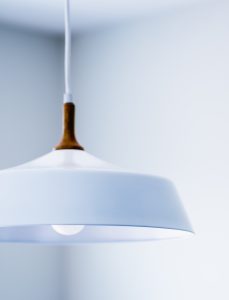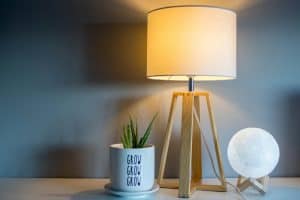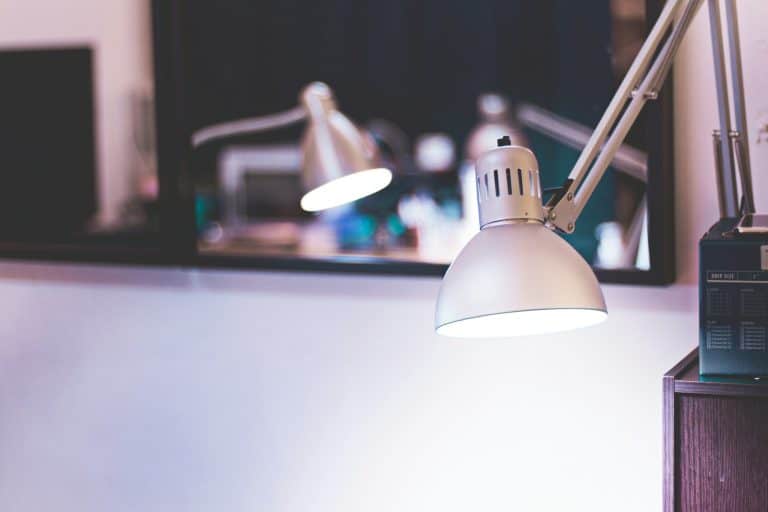As an avid jigsaw puzzle enthusiast, I’ve learned that having the right lighting can make or break your puzzling experience. It’s not just about seeing the pieces clearly, but also about reducing eye strain and enhancing the vibrant colors of the puzzle. Whether you’re piecing together a serene landscape or a complex abstract, the the best lighting for solving jigsaw puzzles is crucial.
Many puzzle lovers swear by natural light for the best clarity, but I know that’s not always available. That’s where specialized lamps come into play. Adjustable and direct light sources, like certain desk lamps, can illuminate your puzzle without overwhelming glare, making it easier to distinguish between those pesky similarly colored pieces.
In my journey to find the perfect puzzle-solving ambiance, I’ve tried everything from overhead lights to innovative headlamps. Each lighting option has its merits and pitfalls, which I’ll dive into to help you find the ideal setup for your puzzling space.
The Best Lighting for Solving Jigsaw Puzzles
Why Lighting Matters
Good lighting is crucial when tackling the intricate task of solving jigsaw puzzles. It significantly enhances visibility, ensuring that each puzzle piece’s colors and shapes are vividly clear. This clarity is paramount as it aids in identifying subtle color differences and small details of the puzzle pieces, which are often missed under poor lighting conditions. Moreover, proper illumination helps prevent eye strain. Many avid puzzlers spend hours focused on assembling puzzles, and inadequate lighting can lead to increased eye fatigue and a compromised experience.

Using the best lighting for solving jigsaw puzzles also transforms the activity into a more enjoyable and less stressful endeavor. It’s not just about seeing the pieces clearly but also about creating a comfortable environment that makes puzzling a relaxing hobby.
Common Lighting Challenges for Puzzle Enthusiasts
Puzzle enthusiasts often face several lighting challenges that can hinder their puzzle-solving experience. One of the primary challenges is the presence of glare, which can cause reflections on glossy puzzle pieces, making it difficult to see the details and colors properly. Glare typically occurs with incorrect placement of lights or when using overly bright and unshielded bulbs.
Another common issue is uneven lighting. This happens when light does not uniformly cover the entire puzzling area, leading to shadows or bright spots. Such inconsistencies can distort the appearance of puzzle pieces, misleading the puzzler about the color or shape of the pieces. Ensuring that light evenly covers the workspace, perhaps by using a well-positioned desk lamp or a floor lamp, can mitigate this problem.
Poor lighting not only affects the physical aspects of puzzling but can also make the process less enjoyable. Straining to see piece details or battling the frustration of glare can turn what should be a fun activity into a taxing chore. Therefore, setting up optimal lighting, which may include using daylight bulbs to mimic natural light or selecting specialized jigsaw puzzle lights, is essential for anyone serious about their puzzling.
By understanding why good lighting is crucial and addressing common lighting challenges, puzzlers can enhance their overall experience, making every session of piecing together their masterpiece more delightful and rewarding.
Types of Lighting for Jigsaw Puzzles
Selecting the right lighting for solving jigsaw puzzles can significantly enhance the puzzling experience. Whether you’re an avid puzzler or just starting out, understanding the different types of lighting available can help you choose the best option to reduce glare, improve visibility, and prevent eye strain.
Overhead Lighting Solutions
When I consider overhead lighting solutions, it’s important to focus on lights that minimize shadows and evenly illuminate the puzzle area. Overhead lights, such as adjustable track lighting or ceiling-mounted fixtures, provide broad coverage that can brighten up the entire puzzling space. Choosing light bulbs with natural daylight tones can mimic natural light, making it easier to distinguish puzzle piece colors and details. Daylight bulbs in overhead lights offer the ideal color temperature for intricate activities like jigsaw puzzling.
Table and Floor Lamp Options

For more localized lighting, table and floor lamps are perfect. These lamps allow easier adjustments and can be positioned closer to the puzzle, providing targeted illumination where it’s most needed. A good floor lamp placed next to your puzzle table can offer direct light without causing a glare on glossy puzzle pieces. Desk lamps with adjustable arms can be positioned to shine light from the best angle, preventing shadows that might be cast by other objects. I find that a lamp with a dimmer function is especially useful, as it lets me adjust the light intensity according to the time of day and my personal comfort.
Ambient vs. Targeted Lighting
Understanding the difference between ambient and targeted lighting is key to setting up the perfect puzzling environment. Ambient lighting enhances the overall brightness of a room without causing harsh shadows and is typically achieved with ceiling lamps or wall-mounted fixtures. On the other hand, targeted lighting focuses light directly onto the puzzle, making it ideal for spotting fine details and reducing eye strain. Using a combination of both can provide a balanced lighting setup that allows for hours of comfortable puzzling. For instance, while ambient light can fill the room with a soft glow, a targeted table lamp can be used to illuminate specific sections of the puzzle that require extra attention.
Each lighting type—overhead, table, floor, ambient, and targeted—plays a crucial role in enhancing your jigsaw puzzling experience. By integrating these lighting solutions, you can ensure that every puzzle session is as enjoyable as it is clear. Choosing the best lighting not only helps in accurately placing each puzzle piece but also protects your eyes, making puzzling a fun and safe activity for everyone.
Choosing the Right Light for Your Puzzle Setup
Factors to Consider When Selecting Puzzle Lights
Selecting the right lighting for jigsaw puzzles is crucial for enhancing your puzzle-solving experience. Here are the key factors to consider:
- Brightness and Intensity: The lighting should be bright enough to illuminate individual puzzle pieces without causing glare. A brightness between 1500 and 3000 lux is usually sufficient to see the subtle colors and details.
- Type of Light: Daylight bulbs are preferable because they closely mimic natural daylight, aiding color accuracy and reducing eye strain. The use of LED bulbs is also recommended due to their longer lifespan and lower heat emission compared to incandescent bulbs.
- Adjustability: Opt for lights that offer flexibility in terms of height and angle adjustment. This functionality allows you to focus the light directly on the puzzle without creating shadows or reflections.
- Color Rendering Index (CRI): A higher CRI is better as it means the light source accurately displays the colors of the puzzle pieces. Look for a CRI of 90 or above.
- Size and Coverage: Consider the size of your puzzle and ensure the light’s coverage can accommodate it. Floor lamps and large desk lamps are ideal for providing ample illumination over larger puzzles.
The Benefits of Adjustable Lighting
Adjustable lighting plays a pivotal role in the puzzle-solving setup. I’ve discovered several benefits through personal experience:
- Enhanced Visibility: By adjusting the light angle, you can enhance the visibility of puzzle pieces, distinguishing subtle color differences and intricate details.
- Reduced Glare: Proper positioning of adjustable lights helps minimize glare, which can be particularly bothersome when dealing with glossy puzzle pieces.
- Comfort: Adjustable lighting allows you to tailor light intensity and position to suit your comfort level, thereby reducing eye strain during long puzzling sessions.
- Versatility: These lights are not just beneficial for puzzles but can be effectively used for other hobbies that require precision and attention to detail, such as reading and crafting.
By considering these factors and benefits, you can create an ideal lighting setup that not only enhances your ability to see and sort puzzle pieces but also makes the entire experience more enjoyable and less stressful. Effective lighting is key to transforming puzzling from a potentially tiring challenge to a delightful and engaging activity.
Tips for Optimizing Your Lighting Setup
Positioning Your Lights for Maximum Effect
Positioning lights correctly can transform the jigsaw puzzling experience by providing evenly distributed illumination and minimizing shadows and glare that obscure puzzle pieces. Here are a few positioning strategies that can help:
- Overhead Lighting: An overhead light, positioned directly above the puzzle area, ensures that light covers the entire puzzle. This positioning helps avoid casting shadows by your hands or puzzle pieces themselves.
- Side Lighting: Placing lights to the side of the puzzle area can enhance visibility in a room with insufficient overhead lighting. For puzzles placed on a flat surface like a table or a desk, two lights on opposing sides help to keep the illumination balanced.
- Flexible Arm Lamps: Lamps with adjustable arms offer great versatility. You can move them around to focus the light exactly where it’s needed most. Whether you’re assembling the edges or focusing on the center pieces, these lamps can be adjusted to provide targeted illumination.
Ensuring your lights are well-positioned will enhance your ability to discern puzzle piece shapes and colors, making the puzzling process more enjoyable and less straining on your eyes.

Adjusting Light Intensity and Color
The ability to adjust the intensity and color of your lighting setup not only affects visibility but also impacts comfort and mood while puzzling:
- Dimmable Lights: Using lights with dimmable features allows you to adjust the brightness throughout the day. Brighter light can energize you in the morning, while softer light might be preferable as you wind down in the evening.
- Color Temperature Selection: Lights with adjustable color temperatures enable you to choose between warm and cool tones. Cool light is excellent for enhancing concentration and alertness, ideal for more detailed sections of the puzzle. Warm light, on the other hand, tends to be easier on the eyes and can reduce glare, particularly useful during lengthy puzzling sessions.
- Natural Daylight Bulbs: For those in areas with limited natural light, installing daylight bulbs can mimic natural lighting conditions. These bulbs provide excellent color accuracy and are closer to outdoor lighting, which can help in clearly seeing the true colors of puzzle pieces.
By adjusting light intensity and the color of your bulbs, you can create a more customized and comfortable environment that catles to the dynamics of your jigsaw puzzle-solving activities.
Choosing the right lighting is crucial for any jigsaw puzzle enthusiast. I’ve shared how the right setup not only enhances your puzzle-solving experience but also safeguards your eyes from strain. Remember to experiment with overhead and side lighting and consider the flexibility of arm lamps to find what works best for you. Adjusting the intensity and color temperature can further refine your environment making each puzzling session as comfortable as possible.
Frequently Asked Questions
Why is good lighting important for solving jigsaw puzzles?
Good lighting is crucial for jigsaw puzzles as it enhances visibility, reduces eye strain, and clarifies the true colors and details of the pieces, making the puzzling process more enjoyable and efficient.
What are some common lighting challenges when solving puzzles?
Common challenges include glare, shadows, and insufficient light, which can hinder the ability to accurately identify colors and details of puzzle pieces, leading to increased eye strain and a less enjoyable puzzling experience.
What should I consider when choosing lights for jigsaw puzzles?
When selecting lighting for jigsaw puzzles, consider the light intensity, color temperature, and adjustability. Lights that mimic natural daylight and can be dimmed to suit different times of the day are ideal.
How should I position my lights when working on a jigsaw puzzle?
Position lights overhead or to the side to avoid casting shadows over the puzzle. Using flexible arm lamps can also help target specific areas of the puzzle without moving the entire setup.
What type of bulbs are best for jigsaw puzzling?
Opt for bulbs that offer natural daylight colors (5000K to 6500K) as they provide the best contrast and color accuracy. Dimmable LED bulbs are a good choice because you can adjust the lighting intensity according to your needs and time of day.

